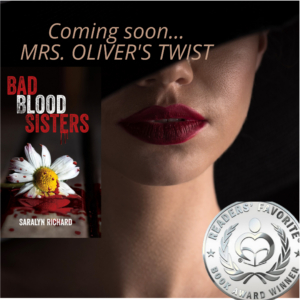Interiority by Saralyn Richard
Interiority by Saralyn Richard

I recently attended a virtual meeting at which the author, Mark Stevens, spoke. He claimed the main reason a reader likes a fiction book is interiority. Since all writers aim for readers who like our books, I paid attention.
Mark did an excellent job of explaining what interiority is—masterful, in fact, because interiority, like voice, is difficult to nail down. Basically, interiority is the multi-dimensional way in which an author provides the internal thoughts, feelings, and attitudes of a character, so that the character comes alive on the page.
Mary Kole gives another thorough explanation of interiority in fiction here.
When I’m writing, the chief vehicle for character interiority is point of view. Each time I write another book, I learn more about point of view and how critical it is for giving readers the best story.
Here are some of the things I’ve learned:
- The perfect POV to serve the story is like the batter’s sweet spot. It can make the difference between a foul ball or a home run.
- Having too many POV characters in one book can cause “head-hopping” for the author and the reader. There are ways to accomplish multiple POVs gracefully, but they require a lot of writing finesse.
- The problem with having only one POV character is that character has to be “on stage” in every scene. Everything in the story is seen through that character’s interiority, or it isn’t seen.
- There used to be only two types of third person POV—omniscient and limited. Now there is a third person deep POV that allows access to the POV character’s thoughts and feelings.
Mark Stevens said readers, especially mystery readers, care less about plot points and more about the people who are living within those plots. I’m sure he’s right, because when I think of all the Agatha Christie books I’ve read—with multi-varied plots and settings—what do I recall most? Hercule Poirot, Miss Jane Marple, Tommy and Tuppence Beresford. And Connelly’s Harry Bosch and Renee Ballard. And Patterson’s Alex Cross.
My own writing experience bears this out. When MURDER IN THE ONE PERCENT came out, the most consistent feedback I received was about Detective Parrott. Not the wealthy and powerful partygoers who had occupied my thoughts when plotting out motivation, weapon, and opportunity. Detective Parrott, the Everyman protagonist, captured readers’ attention and hearts way more.
When Quinn McFarland appeared in BAD BLOOD SISTERS, she was the only POV character. Everything in the book was filtered through her eyes and ears, and she shared a lot of her thoughts and feelings with readers. Throughout the writing process, I identified so closely with Quinn that certain chapters caused me physical discomfort. Readers have told me they felt the same thing.
I’ve read many books where a character’s interiority left an indelible imprint on me. One example is Kya Clark, the Marsh Girl in WHERE THE CRAWDADS SING.
What examples can you think of where POV characters have stayed with you long after you finished the book?

Saralyn Richard is the award-winning author of seven mystery novels, including the Detective Parrott mystery series, and the children’s book, Naughty Nana. Her newest book, Mrs. Oliver’s Twist, is the sequel to Bad Blood Sisters. Look for it soon.


What an interesting post, Saralyn! I had never heard the term “interiority” before, but you explained it well, and it makes so much sense.
Thanks, Lois. A new vocabulary word for the day! 🙂
Saralyn, a very astute assessment of POV. I remember making the decision to change my main character’s voice from third person to first person in order to “get closer” to her emotions. Never considered the word for it, but now, I’m all in for interiority!
Glad this makes sense to you, Gay. There’s always so much to learn about writing fiction! 🙂
Shared on BlueSky. Great post, though full disclosure I LOVE books with multiple POVs, but yes, they have to be handled well. I’m currently working on a book like that (miles to go before I sleep) so I’m reading lots of multiple POV books (because reading is the best teacher). Would you mind if I share this on my blog in future? I’d link it back to the original post here. I think my readers would find it interesting.
Thanks for sharing, Judy. I’d be honored to have you share on your blog. And, to be clear, I enjoy multiple POV books, too. Murder in the One Percent could only be told that way. The partygoers each had slightly different takes on the action, with clues specific to them. 🙂
Very interesting! Mark is a great teacher and author. Since he writes about baseball, I love your baseball analogy. Interesting all these words that are being created, and, yes, I get that language is constantly evolving, but I think lens could be substituted as well. Th as new for sharing!
Lens is a great synonym, Donnell. Thanks for reading and commenting!
I love J.D.Kirk’s DCI Logan series. Whenever I can grab a new one, I do. There are many characters in those books who have become my friends.
Smiling at this comment, because I have fictional friends, too. Many of them.
It’s always the characters.
I agree, except in classic mysteries the emphasis was on plot. I think interiority has changed all that.
Really interesting post. I’m running into that single POV issue right now . . . and working out how my character can gain certain information about things she didn’t witness personally without it feeling too forced. I love having more than one POV in a book, both the writing of it and the reading, but it does make the writing harder (in my opinion.) And I also have thought a lot about Kya Clark after reading Where the Crawdads Sing. She definitely sticks with you. I’m having trouble coming up with another one exactly like her with that kind of depth … but J.D. Robb’s Eve Dallas is one I really like.
We have similar tastes in books, so I may pick up one of JD Robb’s books. I think Kya sticks with us, because we go through so much with her.
A very valid analysis – definitely rings true with characters I most resonate with when reading.
So glad you agree, Debra. Thanks for commenting.
Great post, Saralyn; I’d never heard of the term interiority, but it makes a lot of sense. I’m working on a book with several POVs, so I like the comment about finessing. And I agree that people love mysteries because of the characters. I rarely remember the plot, but if I connect with the characters, I’m hooked on the series. Thanks so much for sharing this.
Thanks for commenting, Kathleen, and I’m so glad the article resonates with you! Can’t wait to see what you do with your multiple POVs.
Thanks for sharing this, a new word for me, but not the concept. I go pretty far back, and I read authors who showed deep interiority. One of my favs was Frank Herbert (first book published in 1956), who used the character’s internal dialogue extensively. (It famously did not work well in the 1984 movie version of Dune.) So, not sure I understand. “There used to be only two types of third-person POV—omniscient and limited. Now there is a third person deep POV that allows access to the POV character’s thoughts and feelings.” Regardless, there is no question that POV as an element of Voice is complex and controversial and if you get it “right,” a powerful tool!